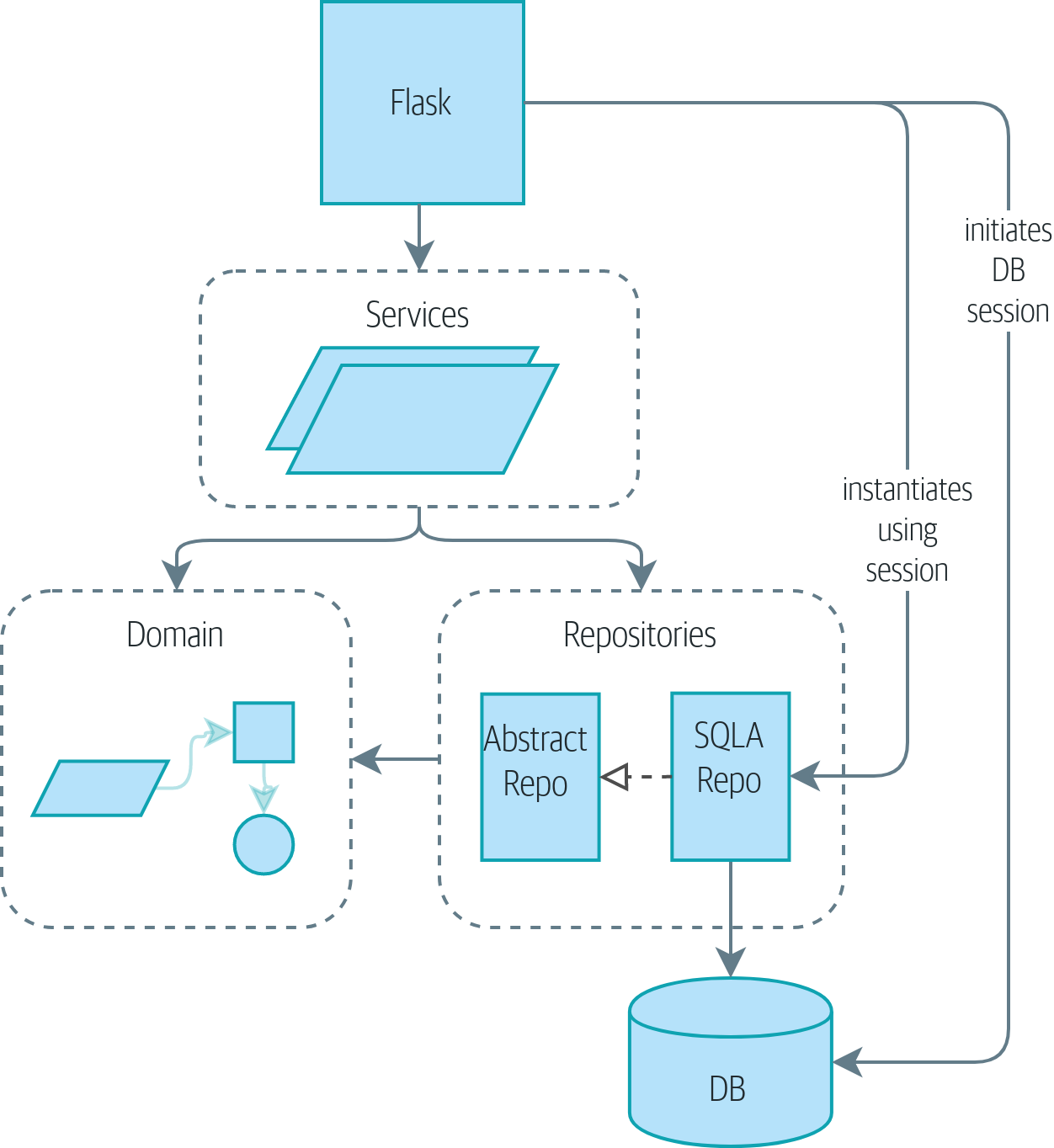Chapter 6. Unit of Work Pattern
In this chapter we’ll introduce the final piece of the puzzle that ties together the Repository and Service Layer patterns: the Unit of Work pattern.
If the Repository pattern is our abstraction over the idea of persistent storage, the Unit of Work (UoW) pattern is our abstraction over the idea of atomic operations. It will allow us to finally and fully decouple our service layer from the data layer.
Figure 6-1 shows that, currently, a lot of communication occurs
across the layers of our infrastructure: the API talks directly to the database
layer to start a session, it talks to the repository layer to initialize
SQLAlchemyRepository, and it talks to the service layer to ask it to allocate.
Tip
The code for this chapter is in the chapter_06_uow branch on GitHub:
git clone https://github.com/cosmicpython/code.git cd code git checkout chapter_06_uow # or to code along, checkout Chapter 4: git checkout chapter_04_service_layer

Figure 6-1. Without UoW: API talks directly to three layers
Figure 6-2 shows our target state. The Flask API now does only two things: it initializes a unit of work, and it invokes a service. The service collaborates with the UoW (we like to think of the UoW as being part of the service layer), but neither the service function itself nor Flask now needs to talk directly to the database.
And we’ll do it all using a lovely piece ...
Get Architecture Patterns with Python now with the O’Reilly learning platform.
O’Reilly members experience books, live events, courses curated by job role, and more from O’Reilly and nearly 200 top publishers.

